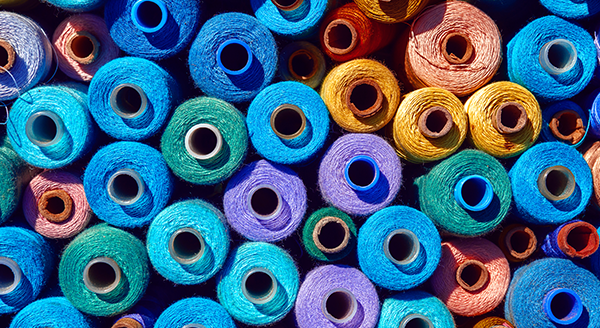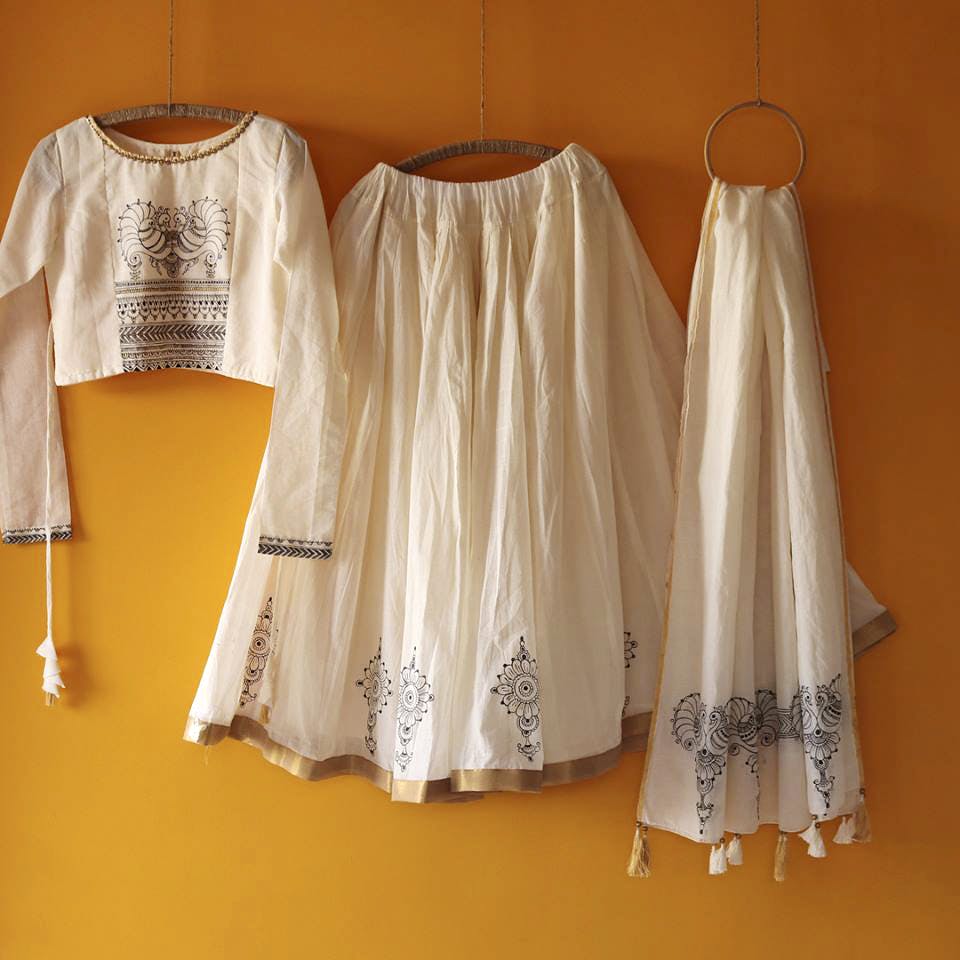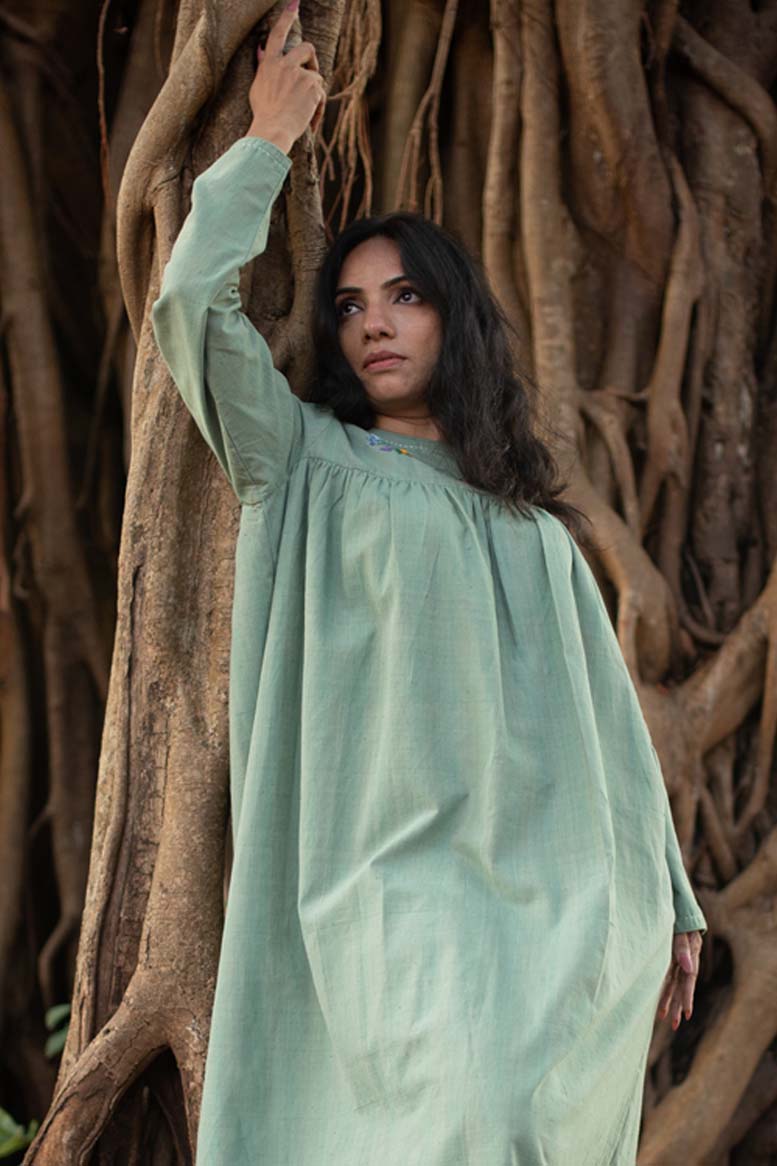Top 15 Best Non- Leather Textiles Goods in India 2023
Best Non- Leather Textiles Goods in India

Non-leather textiles have become increasingly popular as a more sustainable and ethical alternative to leather, which requires the use of animal products and can be harmful to the environment due to its production processes. Non-leather textiles are often more affordable and easier to care for than leather goods, making them a popular choice for consumers who are looking for a more practical and sustainable option.

Here are some popular non-leather textile goods in India that you might consider:
- Cotton clothing
Cottonis a popular material in the textile industry for clothing due to its durability, breathability, and versatility. It can be used for a wide range of textile items, including t-shirts, dresses, shirts, pants, and more. Cotton fabric is also available in a variety of weights and textures, ranging from lightweight and airy to heavier and more substantial. India is one of the largest producers of cotton in the textile world, and cotton clothing is a popular choice for its comfort and affordability. The use of cotton in textile production also supports local farmers and communities, making it a sustainable and ethical choice for textile consumers.
Cotton is a natural fiber that is easy to care for, and it can be machine-washed and dried. However, it is important to read and follow the care instructions on the garment label to ensure that the clothing stays looking its best.
India is one of the largest producers of cotton in the world, and cotton clothing is a popular choice for its comfort and affordability. The use of cotton in clothing production also supports local farmers and communities, making it a sustainable and ethical choice for consumers.
- Jute bags
Jute bags are bags made from jute, a natural fiber that is derived from the jute plant. Jute is a strong and durable material that is also biodegradable and environmentally friendly. Jute bags come in a variety of sizes and styles, from small tote bags to large shopping bags and backpacks.
Jute bags are popular in India and around the world due to their eco-friendliness and versatility. They can be used for a variety of purposes, including carrying groceries, books, and other items. Jute bags are also a popular choice for promotional and marketing purposes, as they can be customized with logos and designs.

In addition to their eco-friendliness, jute bags are also known for their durability and strength. They can withstand heavy weights and frequent use, making them a practical and long-lasting option for consumers. Jute bags are also relatively affordable, making them accessible to a wide range of consumers.
Overall, jute bags are a popular choice for consumers who are looking for a sustainable and practical alternative to traditional plastic bags. They are also a great way to support local communities and farmers, as jute is primarily grown in India and other developing countries.
- Khadi clothing
wool fibers. The term “khadi” refers to both the textile cloth itself and the movement that was started by Mahatma Gandhi to promote self-sufficiency and self-reliance in India. Khadi textile fabric is known for its unique texture and feel, as well as its durability and comfort.
Khadi clothing is popular in India for its traditional and cultural significance, as well as its ethical and sustainable production. The process of handspinning and handweaving khadi textile fabric is labor-intensive and requires skill and craftsmanship, which creates job opportunities and supports local communities. Khadi clothing is also eco-friendly, as it does not require any electricity or machinery for production.
Khadi textile clothing is available in a wide range of styles and designs, from traditional saris and dhotis to modern clothing like shirts, pants, and dresses. Khadi textile fabric can also be dyed and printed with various designs and patterns.
Overall, khadi textile clothing represents an important part of India’s cultural and historical heritage, as well as its commitment to sustainability and self-reliance.
- Denim clothing
Denim clothing is a type of textile that is made from denim fabric, which is a sturdy cotton twill textile. Denim is known for its durability and versatility, and it is commonly used for a wide range of textile items, including jeans, jackets, skirts, and dresses.
Denim textile is popular in India and around the world for its durability, comfort, and style. Denim jeans, in particular, are a staple of casual wear, and they are available in a wide range of cuts and styles, from skinny and slim-fit to bootcut and flared. Denim jackets and skirts are also popular options for adding a touch of denim textile to any outfit.
Denim fabric is available in a range of colors, from classic blue to black, white, and other shades. It can also be embellished with embroidery, patches, and other decorative elements to add a unique touch to denim textile clothing.
Overall, denim clothing is a popular choice for consumers who value durability, comfort, and style. It is a versatile textile that can be dressed up or down, making it a staple of any wardrobe.
- Linen clothing
Linen clothing is clothing made from linen fabric, which is a lightweight, breathable, and durable fabric made from the fibers of the flax plant. Linen is known for its unique texture and feel, as well as its ability to keep the wearer cool in hot weather. Linen clothing is popular in India and around the world for its comfort, style, and eco-friendliness.
:max_bytes(150000):strip_icc()/everlane-fashion-tout-EVRLN-FASH0522-5a3fb68e9b554b709b240a6f3a1979f9.jpg)
Linen fabric is available in a range of colors, from classic neutrals like white and beige to bright and bold shades. It is also a popular choice for natural dyeing, as it takes dye well and produces rich and vibrant colors.
Linen clothing is available in a wide range of styles, from casual to formal. Linen shirts, pants, and dresses are popular choices for casual wear, while linen suits and jackets are
- Rayon clothingRayon fabric is a type of semi-synthetic textile made from cellulose fibers derived from wood pulp or bamboo. Rayon is known for its soft, lightweight, and breathable qualities, which make it a popular choice for clothing in warm climates.
Rayon textile is available in a wide range of textures and finishes, from smooth and silky to crinkly and textured. It can be dyed in a variety of colors and prints, making it a versatile option for fashion designers and consumers.
Rayon clothing is available in a variety of styles, from casual to formal. Rayon shirts, dresses, and skirts are popular choices for casual wear, while rayon suits and blouses are popular for more formal occasions.
One potential drawback of rayon textile and clothing is that it is not as durable as some other fabrics, and it can shrink or lose its shape if not cared for properly. However, with proper care, rayon textile and clothing can be a stylish and comfortable addition to any wardrobe.
- Silk clothing .Silk clothing is a textile made from silk fabric, which is a natural textile fiber made from the cocoon of the silkworm. Silk is a textile known for its soft, lustrous texture, its unique drape, and its ability to regulate body temperature, keeping the wearer cool in warm weather and warm in cool weather.
Silk clothing is popular in India and around the world for its luxury, elegance, and versatility. Silk textile is available in a wide range of colors and prints, and it can be woven into a variety of textures, from smooth and silky to rough and textured.
Silk clothing is available in a variety of styles, from traditional saris and lehengas to modern dresses, blouses, and suits. Silk scarves and shawls are also popular textile accessories that can add a touch of luxury to any outfit.
Silk is a delicate textile that requires special care to maintain its beauty and longevity. It should be hand washed or dry cleaned, and it should be stored carefully to prevent wrinkles and damage.
- Handloom clothing
Handloom clothing is clothing that is made using traditional handloom weaving techniques, where a weaver uses a handloom machine to create fabric. Handloom weaving is an ancient technique that has been practiced for thousands of years in India and around the world.
Handloom clothing is known for its unique texture and quality, as well as its eco-friendliness and sustainability. Handloom fabric is typically made from natural fibers like cotton, silk, or wool, and it is often dyed using natural dyes made from plant extracts.

Handloom clothing is available in a wide range of styles, from traditional saris and kurtas to modern dresses, tops, and skirts. Handloom fabric can be woven into a variety of textures and patterns, from intricate jacquard weaves to simple plain weaves.
Handloom clothing is also a popular way to support traditional artisans and weavers, who often work in small communities and rely on their craft to make a living. By buying handloom clothing, consumers can support these artisans and help preserve traditional weaving techniques and cultural heritage.
Overall, handloom clothing is a unique and sustainable option for those who value quality, tradition, and craftsmanship.
- Nylon bags
Nylon bags are bags made from nylon fabric, which is a synthetic material that is strong, durable, and lightweight. Nylon was first introduced in the 1930s and quickly became popular for its versatility and affordability.
Nylon bags are available in a wide range of styles, from backpacks and tote bags to duffel bags and messenger bags. They are popular for their durability and resistance to wear and tear, as well as their water-resistant qualities.
Nylon bags are also lightweight, making them a popular choice for travelers who need to pack light. They can be folded or rolled up for easy storage, and many nylon bags are designed with multiple compartments and pockets for organization.
One potential drawback of nylon bags is that they are not biodegradable and can contribute to environmental pollution if not disposed of properly. However, many manufacturers are now producing eco-friendly nylon bags made from recycled materials or using sustainable production methods.
Overall, nylon bags are a popular and practical option for those who value durability, versatility, and affordability. They are widely available and come in a variety of colors, styles, and sizes to suit any need.
- Polyester clothing
Polyester clothing is clothing made from polyester fabric, which is a synthetic material made from petrochemicals. Polyester is a popular fabric for clothing because it is strong, durable, and resistant to wrinkles, shrinking, and fading.
Polyester clothing is available in a wide range of styles, from casual t-shirts and shorts to formal dresses and suits. It can be woven into a variety of textures and finishes, from smooth and silky to textured and matte.
One advantage of polyester clothing is that it is easy to care for and can be machine washed and dried without the need for ironing. It is also a budget-friendly option, as polyester clothing is often less expensive than clothing made from natural fibers like cotton or silk.
However, there are some potential drawbacks to polyester clothing. Polyester is not as breathable as natural fibers, which can make it uncomfortable to wear in hot weather. It can also trap odors more easily than natural fibers, and it may not be as eco-friendly as natural fibers due to its petrochemical origins and potential for contributing to microplastic pollution.
Overall, polyester clothing is a popular choice for its durability, affordability, and ease of care. While it may not be as eco-friendly or comfortable as natural fibers, it remains a practical and versatile option for many consumers.
- Bamboo clothing
Bamboo clothing is clothing made from bamboo fiber, which is a natural and sustainable material derived from the bamboo plant. Bamboo is a fast-growing plant that requires minimal water and no pesticides, making it an eco-friendly choice for clothing production.
Bamboo clothing is known for its soft, breathable, and moisture-wicking properties, making it a popular choice for activewear, loungewear, and sleepwear. Bamboo fabric can also be blended with other natural fibers like cotton or silk to create a range of textures and finishes.
Bamboo clothing is available in a variety of styles, from t-shirts and tank tops to leggings and underwear. It is also popular for its anti-bacterial properties, which help to prevent odor and keep clothing fresher for longer.
In addition to being eco-friendly and sustainable, bamboo clothing is also biodegradable, meaning that it will break down naturally without contributing to pollution. It is also hypoallergenic, making it a good choice for those with sensitive skin.
Overall, bamboo clothing is a versatile and sustainable option for those who value comfort, performance, and eco-friendliness. While it may not be as widely available as other types of clothing, it is becoming increasingly popular as consumers become more conscious of their impact on the environment.
- Tencel clothing
Tencel clothing is clothing made from Tencel fiber, which is a brand name for lyocell fiber made from wood pulp. Tencel is a sustainable and eco-friendly material, as it is derived from renewable wood sources and produced using a closed-loop process that minimizes waste and reduces environmental impact.
Tencel clothing is known for its softness, breathability, and moisture-wicking properties, making it a popular choice for activewear, loungewear, and sleepwear. Tencel fabric is also resistant to wrinkles and has a smooth, silky texture that drapes well and is comfortable to wear.
Tencel clothing is available in a variety of styles, from t-shirts and tank tops to dresses and skirts. It can also be blended with other natural fibers like cotton or wool to create a range of textures and finishes.
One advantage of Tencel clothing is that it is easy to care for and can be machine washed and dried. It is also a biodegradable material, meaning that it will break down naturally without contributing to environmental pollution.
Overall, Tencel clothing is a sustainable and comfortable option for those who value eco-friendliness, softness, and performance. While it may be more expensive than some other types of clothing, it offers a range of benefits and is increasingly popular as consumers become more conscious of their impact on the environment.
- Hemp clothing
Hemp clothing is clothing made from the fibers of the cannabis plant. Hemp is a sustainable and eco-friendly material, as it requires less water and pesticides than other crops and can grow in a variety of climates.
Hemp clothing is known for its durability, breathability, and anti-bacterial properties, making it a popular choice for outdoor and activewear. Hemp fabric can also be blended with other natural fibers like cotton or silk to create a range of textures and finishes.
Hemp clothing is available in a variety of styles, from t-shirts and tank tops to jeans and jackets. It is also popular for its ability to block UV rays and regulate body temperature, making it a good choice for warm weather.
In addition to being eco-friendly and sustainable, hemp clothing is also biodegradable, meaning that it will break down naturally without contributing to pollution. It is also hypoallergenic and naturally resistant to mold and mildew.
Overall, hemp clothing is a durable and sustainable option for those who value eco-friendliness, performance, and comfort. While it may be more expensive than some other types of clothing, it offers a range of benefits and is increasingly popular as consumers become more conscious of their impact on the environment.
- Modal clothing
Modal clothing is clothing made from modal fiber, which is a type of rayon made from beech tree pulp. Modal is a sustainable and eco-friendly material, as it is derived from renewable wood sources and produced using a closed-loop process that minimizes waste and reduces environmental impact.
Modal clothing is known for its softness, breathability, and moisture-wicking properties, making it a popular choice for activewear, loungewear, and sleepwear. Modal fabric also has a silky texture that drapes well and is comfortable to wear.
Modal clothing is available in a variety of styles, from t-shirts and tank tops to dresses and skirts. It can also be blended with other natural fibers like cotton or wool to create a range of textures and finishes.
One advantage of modal clothing is that it is easy to care for and can be machine washed and dried. It is also a biodegradable material, meaning that it will break down naturally without contributing to environmental pollution.
Overall, modal clothing is a sustainable and comfortable option for those who value eco-friendliness, softness, and performance. While it may be more expensive than some other types of clothing, it offers a range of benefits and is increasingly popular as consumers become more conscious of their impact on the environment.
- Organic cotton clothing .
Organic cotton clothing is clothing made from cotton that has been grown without the use of synthetic fertilizers or pesticides. Organic cotton farming promotes healthier soil and reduces environmental impact, making it a sustainable and eco-friendly option.

Organic cotton clothing is known for its softness, breathability, and hypoallergenic properties, making it a popular choice for clothing that comes in contact with the skin, like t-shirts, underwear, and baby clothes. Organic cotton fabric can also be blended with other natural fibers like hemp or linen to create a range of textures and finishes.
Organic cotton clothing is available in a variety of styles, from casual t-shirts and jeans to formal dresses and suits. It can also be dyed with natural or low-impact dyes to minimize environmental impact.




